Indoor rose - proper flower care
Rose grown not only in the garden, but also at home. The breeders did a great job and miniature flowers were born that fit perfectly into the interior. They very patiently endure the dry air in the apartment and can bloom all year round.
The beauty of indoor roses is in no way inferior to garden roses, they are beautiful and exude a delicate aroma. Growing a plant is not easy, but subject to agricultural technology and care rules, the florist will be able to achieve a lush, unearthly beauty of flowering. To successfully breed roses, you need to love, groom and cherish your green pet very much. In this case, everything will definitely work out.
Content:
- Description of a room rose
- Rose varieties
- Growing conditions
- Room rose care
- Diseases and pests
- The consequences of improper flower care
Description of a room rose
The indoor rose belongs to the Rosaceae family and reaches a maximum of 50 cm in height. Among the varieties there are creeping types of flowers that can be interestingly played in hanging flowerpots. Allocate climbing, standard or ground cover species. But mostly indoor rose appears in the form of small bushes. The leaves are carved, lanceolate or matte, depending on the variety. Flower sizes vary - small, medium or large.
Indoor roses are classified as garden roses, therefore, if desired, they can be safely transplanted into the garden.
The color of roses is very diverse - from white to rich burgundy. The latter species are often called black. The origin of the miniature rose is unknown, but some sources point to Southeast Asia, some to Europe. However, in the classical literature on floriculture, China is considered to be the homeland of miniature roses. A distinctive feature of indoor roses is the way of its propagation. It is very important to choose a plant grown from stalk, not vaccinated. Why? In an apartment, a grafted rose is unlikely to survive. Therefore, be careful and purchase a plant grown from a cuttings.
Indoor rose can bloom all year round, some varieties require rest. But it is short-lived. Florists appreciate this feature of the plant and are happy to grow a home rose. She pleases with bright flowering in autumn or winter, on New Year's Eve. If you want to see the stunning beauty of roses all year round, you should know which varieties are suitable for this, and which ones require deep rest.
Rose varieties
Not all varieties of roses are suitable for home growing. Breeders have tried and bred species that loyally respond to conditions that are not quite appropriate for roses. Allocate:
- Bourbon rose - This variety requires a rest from January to March. The plant sheds leaves and begins to release new ones in April. Bloom comes in July and ends in December. The flowers are large, and the bush reaches 50 cm in height.
- Tea room - this type of rose is often grown to decorate terraces or verandas in the summer.
- Repaired - it is this type of flowers that are usually grown indoors. It is quite unpretentious, the flowers are medium, the color is very diverse. It can bloom all year round.
- Bengali - these varieties are appreciated for their unpretentiousness.They develop well at home.
- Chinese - the species is distinguished by rather small flowers, but they are so lush that the bush is completely covered with bright inflorescences. A very beautiful sight.
- Polyanthus - another type of roses, the inflorescences of which are small, but densely blooming.
Florists also distinguish several varieties that they especially fell in love with. These are "Orange Triumph", "Frau Karl Druschki", "Katerina Violett". The Los Angeles variety is especially popular. Its amazing orange flowers are striking in their beauty and elegance. The Kolibri variety has an interesting color - yellow-red hue. The flower seems to be illuminated from the inside, very beautiful. The "Baby Baccarat" variety looks impressive, its inflorescences resemble velvet, the color is maroon with a transition to a dark red hue.
There are a lot of varieties of indoor roses. When choosing, be guided not only by the appearance of the flower, but also by the conditions of detention that it requires for successful flowering.
Growing conditions
rose flower - the plant is very moody. But all her demands come down to sunlight. It will not develop and bloom without adequate lighting. This applies to both garden and indoor roses. Choose a south-facing window or balcony for your baby. If the plant will stand on the windowsill, in the summer you will need to take care of shading. Otherwise, direct sunlight will burn the delicate leaves of the rose. The optimal location of the plant is to the south, a little further from the window. In this way, the diffused sunlight will help the normal development of the plant.
In addition to lighting, the rose needs fresh air - position the flowerpot so that the plant always has access to it.
Don't be afraid to open windows in summer, but don't get draughty. The air in the room should not be dry. To do this, in winter, when the central heating is working, a dish with water or a humidifier is placed around the pot. The temperature in the room should be 23 ° during the day, at least 14 ° at night. Some varieties require rest. During this period, the plant is placed in a room with a temperature of 10 ° -15 °. When the rose goes into the deep sleep stage - 5 ° -7 °.
The rose is not so demanding on the soil, but in fertile soil the plant will bloom more luxuriantly. Sod, humus and sand are prepared for the soil mixture. All parts are mixed and, if desired, added mineral fertilizer... It is advisable to place a pot with a rose in a light planter. This is done in order to root system did not overheat in summer if the flowerpot with a rose is on the windowsill or balcony. If the plant is provided with all the necessary conditions, it will delight with beautiful and long flowering. Carefully consider agricultural practices when growing a rose.
Room rose care
Caring for a room rose is pretty simple. The flower needs watering, feeding, pruning and periodic replanting. Let's take a closer look at each stage of care:
- Watering... It is very important to maintain optimal moisture not only in the soil, but also in the air. During the summer, water the plant as the top layer of the earth dries up. You can not breed dampness in a pot. If water has accumulated in the drip tray, discard it. The root system of a rose can quickly rot from excess moisture. If it's hot, give the baby a sprinkling procedure. Use warm, settled water. It is advisable to do this in the evening. This shower is arranged two to three times a week. In winter, both watering and sprinkling are reduced. If the rose goes into deep sleep and discards all the foliage, the soil is very rarely moistened so that the roots do not dry out.
- Top dressing... If a rose has just been bought in a garden center, it cannot be fed for two months. The plant is already saturated with all fertilizers. After the transplant, after a couple of months, you can start making mineral fertilizers in small doses. During the budding period, fertilizers are applied in which nitrogen compounds predominate.During the flowering period - phosphorus-potassium preparations. It is not necessary to apply a lot of fertilizers, reduce the recommended dose by half. It is better to apply less fertilizer, otherwise the plant will begin to fatten and grow leaves to the detriment of flowering.
- Pruning... Many varieties bloom all summer and autumn, and in winter they go into deep sleep. At the end of flowering, such plants must be cut off. The stems and shoots are shortened to a strong bud. Leaves tend to fall off on their own. If you did not have time to do the pruning in the fall, you can carry out the procedure after the plant wakes up.
- If you have just purchased a rose and it has never bloomed, pinch the buds of the first and second rows. This is done so that the bush grows lush. So the plant will branch, and there will be much more buds.
- Transfer... A transplant is another step in flower care. The rose is transplanted by the transshipment method, as its root system is very fragile and does not tolerate "moving" to a new pot. The newly purchased plant is transplanted after a week. You cannot do this right away. It must adapt to new living conditions and get stronger. An adult rose is transplanted once every two years.
Proper care and adherence to optimal conditions of detention is the key to a lush and beautiful flowering. Do not be lazy and look after the rose.
Diseases and pests
Indoor rose is a beautiful plant, but, like other types of roses, it is prone to attack by pests and the appearance of diseases:
- One of the most common rose pests is the spider mite. Sooner or later, he will definitely appear on your rose. Unfortunately, in an apartment it is very difficult to create conditions for a plant that would not lead to the appearance of pests or fungal diseases. In winter, for example, the air in the room is very dry - this contributes to the appearance of a mite. In this case, it is important to take preventive measures in a timely manner. Seeing a tick on a plant is pretty easy. Small dots of brown or red color appear on the leaves and stems. These are pests. Over time, the leaves begin to take on a yellowish tint. Then they fall off. A barely noticeable cobweb can be seen between the shoots. To combat spider mites, insecticides are used, for example, Fitoverm or Neoron. At the time of buying roses pay attention to her condition. Do not use a plant with spots or blooms of different colors.
- Another enemy of the rose is the scale insect. The pest is easy to recognize. Dark growths appear on the leaves and stems. They are easy to separate. Before processing the plant, all scale insects must be removed. Otherwise, spraying will be useless. The pest has a shield that protects it from chemicals. The rose is sprayed with insecticides, for example, Actellik.
- If spots, whitish deposits or rot begin to appear on the leaves of the rose, treat the flower with colloidal sulfur or the "Hom" preparation. For prevention, you can spray the plant with any fungicides... This is especially true if there is a significant temperature difference in the room. This leads to the appearance of fungal or viral diseases. While maintaining optimal conditions of detention, the appearance of diseases or pests is practically reduced to zero.
- Another serious disease of the rose is cancer. It appears as yellow stripes across the leaf. Later, all the greens fall off, and the root system rots. Unfortunately, there is no cure for viral cancer. The plant is removed. It is very important not to put the rose close to other flowers. So there will be no risk of spreading the infection. Moreover, the rose does not like its neighbors. It will develop better and bloom more luxuriantly if there are no other plants nearby.
The consequences of improper flower care
Below is a list of mistakes when growing a rose and their consequences:
- Inadequate watering and dry air - the plant begins to dry out, the leaves fall off and turn brown at the tips.
- Damp soil, sprinkling procedures are too frequent and are carried out in a cold room - the shoots begin to rot, the leaves fall off.
- Any changes in the conditions of detention (change of window, temperature) - the rose immediately sheds its leaves and begins to dry out.
- The rose is not transplanted for more than three years - the plant lags behind in growth, does not bloom, the leaves dry up and fall off.
As you can see, careless care will inevitably lead to problems. The plant will immediately lose its decorative appearance, become nondescript and stunted. Therefore, it is so important to monitor the condition of the flower and maintain optimal conditions of detention. It is very difficult to reanimate a plant when roots rot. To do this, remove it from the pot and inspect it carefully. Carefully cut out all decayed areas. Rinse the root system with warm, settled water. Dry a little and plant in a new pot with fresh substrate. It is not a fact that the rose will normally tolerate such a procedure. Most likely, she will not survive.
Many flower growers advise underfilling rather than pouring a room rose.
It is much easier to reanimate a dried plant, the procedure will be more successful. Therefore, water the plant sparingly as needed. You should be especially careful with watering in winter. Try to pour water at the root rather than all over the foliage. This will reduce the risk of rot.
Correct care, a bright place, fresh air and regular feeding will contribute to the healthy development of the plant and lush flowering, which will delight almost all year round.
More information can be found in the video:



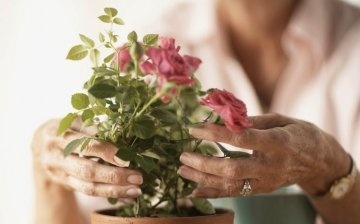

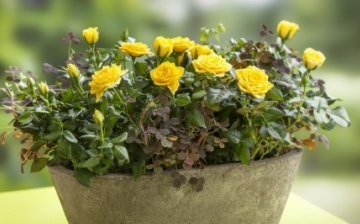
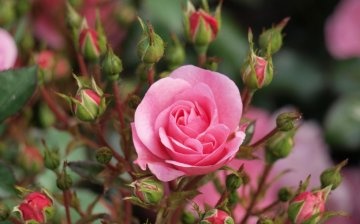
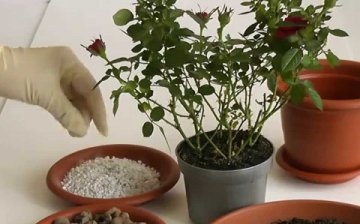
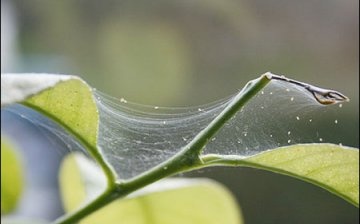
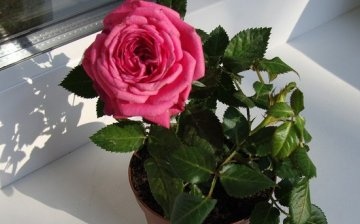








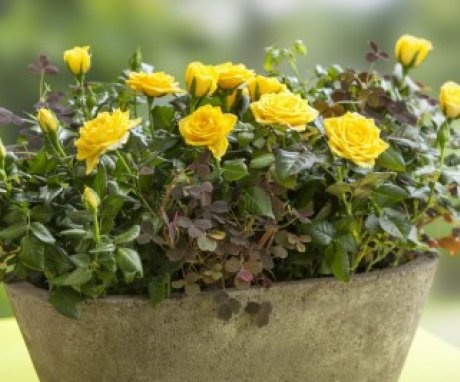
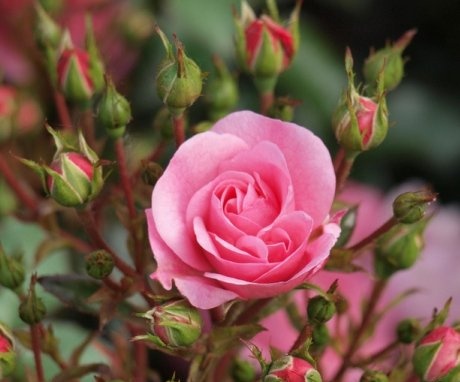
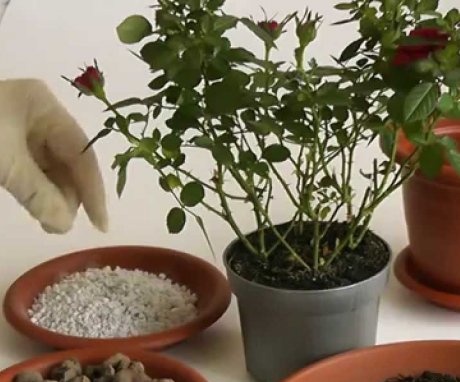
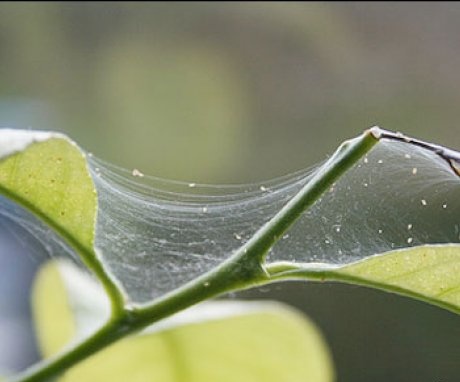
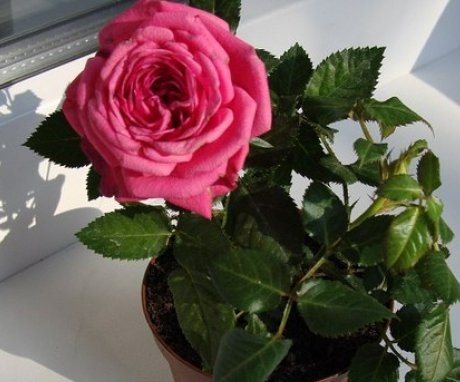
A rose in a pot in a room, it is quite possible to grow from cuttings. True, such a plant is not winter-hardy, it does not matter for a home flower. By pruning, you can form a small bush in a pot. You can feed the rose with nitrogen or combined fertilizers.